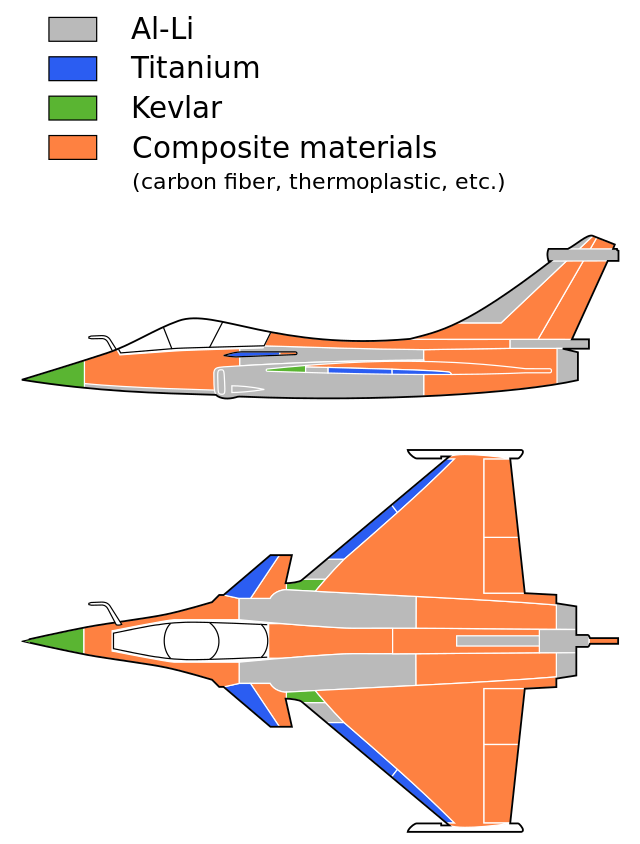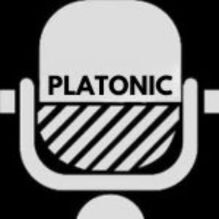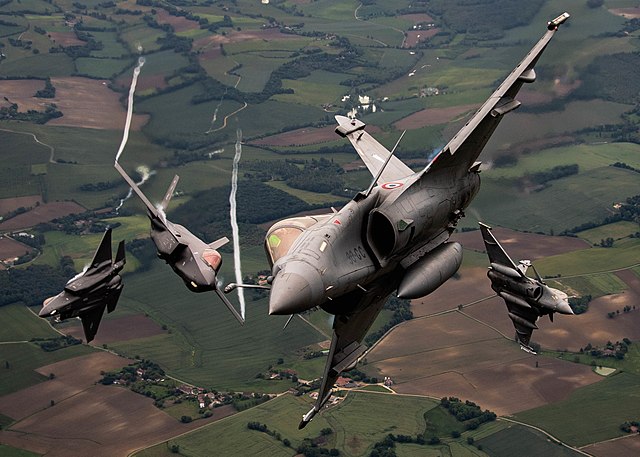The Dassault Rafale, meaning “gust of wind” or “burst of fire” in military parlance, exemplifies French aviation expertise. Crafted by Dassault Aviation, a revered name in the industry, this twin-engine, canard delta wing, multirole fighter aircraft embodies France’s aviation prowess.
Originating from the mid-1970s, the Rafale project stemmed from the French Air Force and Navy’s need for advanced fighters, aiming to modernize their existing fleets. Initially, France entered into an arrangement with the UK, Germany, Italy, and Spain to produce an agile multi-purpose “Future European Fighter Aircraft” (which would become the Eurofighter Typhoon). However, disagreements over workshare and differing requirements led to France’s pursuit of its own development programme
Dassault’s technology demonstrator took flight on July 4, 1986, paving the way for an extensive eight-year flight-test program. The Rafale, a product almost entirely of French construction, involved major defence contractors like Dassault, Thales, and Safran, setting it apart from its European counterparts.
Introduced in 2001, the Rafale became operational in 2004 with the French Navy and in 2006 with the French Air Force. Its combat-proven track record since 2007 and its global appeal, exported to nations including Egypt, India, Qatar, and Greece, showcase its international recognition.
The birth and evolution of the Dassault Rafale reflect France’s unwavering commitment to aerospace innovation, marking a tale of resilience, strategic vision, and technological brilliance.
Dassault Rafale’s Capabilities: Why It Stands Out
The Dassault Rafale stands as a pinnacle of modern aviation, crafted by Dassault Aviation. This French twin-engine, canard delta wing, multirole fighter aircraft boasts incredible speeds, reaching up to 1.8 Mach. Its diverse capabilities encompass electronic warfare, air defence, ground support, and in-depth strikes, making it a formidable asset for any air force. The Rafale comes in three variants: Rafale C for land bases, Rafale M for carrier operations, and Rafale B, a two-seater version. Equipped with cutting-edge sensors like RBE2 radar and SPECTRA, it excels in data fusion, empowering pilots as tactical decision-makers. Combat-proven since 2007, the Rafale has garnered international acclaim, selected by nations like Egypt, India, and Qatar. Its proven performance and unmatched versatility make the Dassault Rafale a premier choice for air superiority.
Dassault Rafale in Global Defence
The Dassault Rafale, a global defence powerhouse, excels in versatility and cutting-edge capabilities. Developed by Dassault Aviation, this twin-jet fighter operates seamlessly from both aircraft carriers and shore bases.
Designed for diverse combat missions, including air superiority, close air support, reconnaissance, and nuclear deterrence, Rafale’s “Omnirole” prowess aligns with modern defence needs. Its adoption by the French Navy in 2004 and the French Air Force in 2006 showcased its superior capabilities.
This aircraft’s global appeal is evident, with countries like Ukraine considering it for their defence needs, alongside other contenders2. Rafale’s combat legacy since 2007 underlines its effectiveness and adaptability, demonstrated in long-duration missions and rapid overseas deployments.
In the realm of global defence, Rafale shines, integrating a variety of armaments and offering unmatched versatility. Its success abroad, coupled with combat-proven reliability, solidifies its position as a strategic asset in the world of modern military aviation.
Dassault Rafale’s Role in NATO Operations
The Dassault Rafale, a pinnacle of aviation prowess crafted by Dassault Aviation, stands as a linchpin in NATO operations, notably enhancing security in Eastern Europe amid geopolitical challenges. During the winter of 2022/2023, French Rafale fighters, bolstered by their naval counterparts, ensured robust air defence in the Baltic States, showcasing their combat-ready stance.
This multirole marvel, armed with a diverse arsenal, excels in air supremacy, reconnaissance, and ground support, contributing significantly to regional peace and security. Its agility was highlighted in long-duration missions and swift deployments to Pacific territories within 48 hours.
Internationally, the Rafale is a coveted choice for air forces worldwide, including Egypt, India, Qatar, Greece, Croatia, Indonesia, and the UAE. Its operational excellence and proven efficiency have solidified its reputation.
In essence, the Dassault Rafale’s pivotal role in NATO operations amplifies regional stability. Its cutting-edge capabilities reinforce NATO’s defence strategy, making it an indispensable asset for safeguarding global peace.
How Rafale Strengthens France’s Defence
The Dassault Rafale, a flagship of French defence innovation crafted by Dassault Aviation, stands tall as a multifaceted combat marvel1. Its versatile nature encompasses a wide array of missions, ranging from air superiority to deep strikes and reconnaissance1. Partnered with Quick Reaction Alert missions and strategic power projection, the Rafale epitomizes air defence excellence.
What sets the Rafale apart is its predominantly French production, involving key defence players like Dassault, Thales, and Safran. This not only fortifies France’s security but also bolsters its domestic defence industry, fueling economic growth.
Noteworthy enhancements include the integration of 200 MBDA Meteor missiles, expanding the Rafale’s engagement range. France’s unwavering commitment to upgrade the Rafale, evident in the F4 standard program, showcases adaptability to evolving defence needs.
Internationally, the Rafale has forged vital defence partnerships, notably with India through strategic acquisitions. These collaborations amplify France’s global influence and foster economic gains, enriching diplomatic ties.
In essence, the Dassault Rafale emerges as France’s frontline guardian, equipped with advanced capabilities, continuous evolution, and international alliances, reinforcing the nation’s defence prowess.
India’s Defence Upgrade: The Induction of Dassault Rafale
The Dassault Rafale, a pinnacle of aerial prowess meticulously crafted by Dassault Aviation, has ushered in a new era for India’s defence landscape123. India’s strategic investment, an $8.82-billion deal for 36 Rafale jets, underscores its commitment to advanced defence capabilities. The induction of the Rafales into the 17 Squadron ‘Golden Arrows’ and the 101 Falcons of Chhamb and Akhnoor has fortified India’s defence against emerging regional challenges.
This 4.5th generation combat aircraft stands as a beacon of versatility, equipped for diverse missions ranging from ground and sea attacks to reconnaissance and nuclear deterrence. Its arsenal includes cutting-edge SCALP air-to-ground laser-guided ammunition, capable of precise strikes from a remarkable distance of over 300 kilometers. The Rafale’s potential domestic production, explored through an assembly line in India, addresses the surging demands from both the Indian Navy and Air Force.
The Dassault Rafale’s induction signifies a paradigm shift in India’s defence capabilities. Its advanced features, battle-proven efficiency, and future domestic production pave the way for a robust and self-reliant defence strategy.
The Indo-French Defence Deal: A New Chapter
The Indo-French Defence Deal marks a historic alliance between India and France, enhancing their strategic ties across diverse realms. This partnership signifies shared perspectives on international matters and a robust bilateral relationship.
Several pivotal agreements have been inked, encompassing vital aspects like submarines for the Indian Navy and advancements in jet and helicopter engines, fostering intelligence sharing and military capabilities. Mutual collaboration extends to maritime, space, and cyber domains, augmenting joint initiatives and military exercises.
France’s resolute support for India’s ‘Atmanirbhar Bharat’ vision underscores a deep-rooted cooperation, emphasizing defence industrialization, technology research, and development. Beyond defence, joint efforts span maritime security, counter-terrorism, climate change, renewable energy, and sustainable development, forging a comprehensive partnership.
In essence, the Indo-French Defence Deal not only bolsters defence capacities but also propels cooperation across various sectors. This strategic alliance serves as a linchpin for regional stability and global security.
Why India Chose Dassault Rafale
India’s selection of the Dassault Rafale as its fighter jet of choice was a strategic move driven by several pivotal factors. Firstly, Rafale emerged as the lowest bidder, factoring in life-cycle costs, making it a financially prudent choice for India’s defence requirements5.
Secondly, Rafale’s successful trial campaign in India showcased its precise alignment with the Indian Navy’s operational needs, especially its adaptability to aircraft carriers, a vital criterion for its selection.
Furthermore, Rafale’s synergy with the Indian Air Force, sharing weaponry and electronics, along with India-specific enhancements, ensures uniformity, enhancing operational efficiency and saving costs. The shared training and maintenance infrastructure also translates into significant cost reductions, benefiting both the Navy and taxpayers.
Dassault Aviation’s forward-looking initiative to manufacture Rafale jets in India aligns with India’s ambitious Multi-Role Fighter Aircraft (MRFA) tender by the Indian Air Force (IAF). This endeavor promises to enhance India’s aerospace capabilities and revolutionize global supply chain dynamics, showcasing a transformative vision.
India’s decision to opt for the Dassault Rafale was steered by its operational excellence, financial viability, harmonization with existing defence setups, and the prospect of domestic production.
The Strategic Importance of the Deal for India
The Rafale deal stands as a cornerstone in India’s defence landscape for several compelling reasons. Firstly, Rafale, armed with cutting-edge technology, acts as a powerful deterrent against regional threats, ensuring a balance of power dynamics1. Equipped with MBDA’s potent weaponry, it reshapes the security landscape, providing India a substantial edge.
Secondly, the Indo-French defence partnership, bolstered by the Rafale deal, ushers in a new era of collaboration, enhancing intelligence sharing and mutual capabilities. These agreements pave the way for joint initiatives in various domains, including maritime, space, and cyber.
Thirdly, Dassault’s vision to produce Rafale jets domestically aligns with India’s ambitious Multi-Role Fighter Aircraft (MRFA) tender, promising elevated aerospace capabilities and reshaping global supply chains.
Lastly, the Rafale deal aligns seamlessly with India’s ‘Atmanirbhar Bharat’ vision, with significant investments in domestic manufacturing. This synergy between technological prowess, international collaboration, and self-reliance encapsulates the strategic essence of the Rafale deal, fortifying India’s defence capabilities and shaping its vision for a secure future.
The Future of Dassault Rafale in India"

The future of Dassault Rafale in India is poised for significant growth, marked by strategic initiatives that enhance its local presence and production capabilities.
Dassault Aviation is actively considering establishing a Rafale assembly line in India to meet the escalating demands from the Indian Navy and Air Force. This forward-thinking move is aimed at satisfying the increasing need for Rafale fighter aircraft within India.
Through the Dassault Reliance Aerospace Limited (DRAL) joint venture, a cutting-edge manufacturing plant in Nagpur, India, has been diligently producing vital components for Rafale jets within the MIHAN Special Economic Zone. This facility has manufactured essential parts like engine doors and canopies, demonstrating the potential for further expansion4. Dassault Aviation plans to utilize the Nagpur plant for Rafale fighter jet assembly, aligning with its vision for India’s aerospace industry.
Dassault’s ambitious plan aligns with the Multi-Role Fighter Aircraft (MRFA) tender pursued by the Indian Air Force (IAF). If successful, this venture will elevate India’s aerospace capabilities and reshape global supply chains, emphasizing the nation’s growing prominence in the industry.
With the prospect of locally assembled Rafale jets taking flight as early as 2028, Dassault aims to redefine production timelines, marking a significant advancement from the initial projections.
In summary, Dassault Aviation’s strategic endeavors, including the exploration of an Indian assembly line and plans for a global Rafale manufacturing hub, foretell a promising future for Dassault Rafale in India.
Upcoming Rafale Squadrons in India
The Dassault Rafale stands as a cornerstone of the Indian Air Force’s (IAF) might, with ongoing expansions shaping its future. Presently, India operates two operational Rafale squadrons, with 35 out of 36 aircraft delivered. These squadrons, stationed in Ambala and Hasimara, are strategically positioned against Pakistan and China.
Looking forward, the IAF plans to incorporate nine additional squadrons by 2025-26, including 36 Rafales, bolstering its fighter strength. Speculations hint at a possible contract for 36 more Rafales, potentially reaching a total of 72.
The upcoming Rafale squadrons signify a substantial enhancement in India’s defence capabilities. This strategic reinforcement not only amplifies India’s air power but also plays a pivotal role in upholding regional stability. The Rafale’s advanced capabilities continue to shape India’s defence landscape, ensuring a robust and secure future.
Prospects for Indo-French Defence Cooperation
The Indo-French defence cooperation, bolstered by the Rafale deal, holds significant promise. India and France have strengthened their military ties through joint exercises like FRINJEX-232, enhancing tactical coordination. The pivotal Rafale Multi-Role Combat Aircrafts agreement deepened India’s defence capabilities and fortified bilateral relations.
France’s support for ‘Atmanirbhar Bharat’ aligns with Prime Minister Modi’s vision, fostering joint research and advanced technology development. The collaboration extends to maritime security, counter-terrorism, and new Make in India initiatives, signaling continued growth.
In conclusion, the Indo-French defence partnership, underscored by the Rafale pact, signifies a bright future. With shared objectives in regional stability and global security, this alliance is poised to thrive, paving the way for enhanced cooperation in defence innovation and strategic initiatives.



